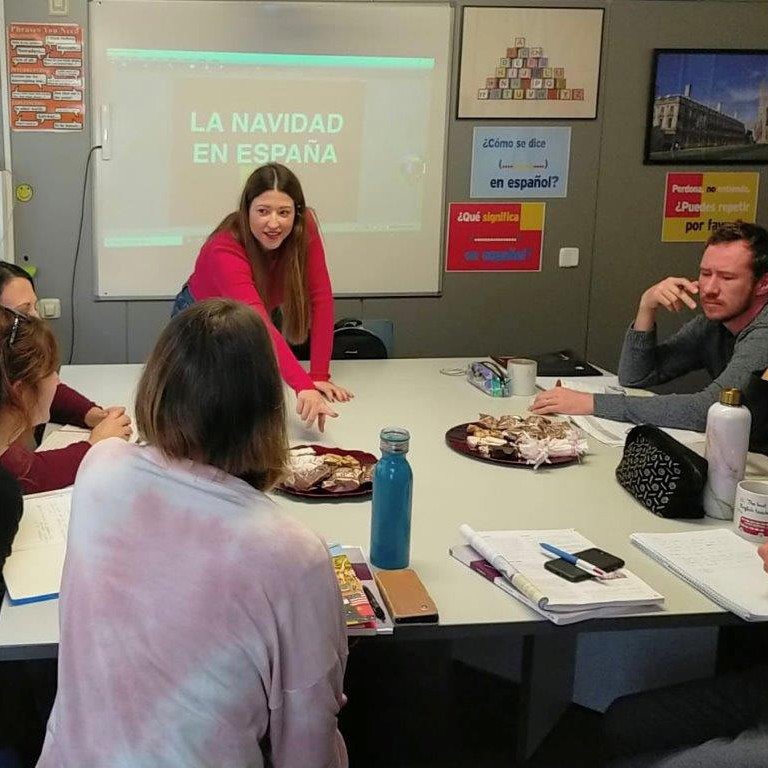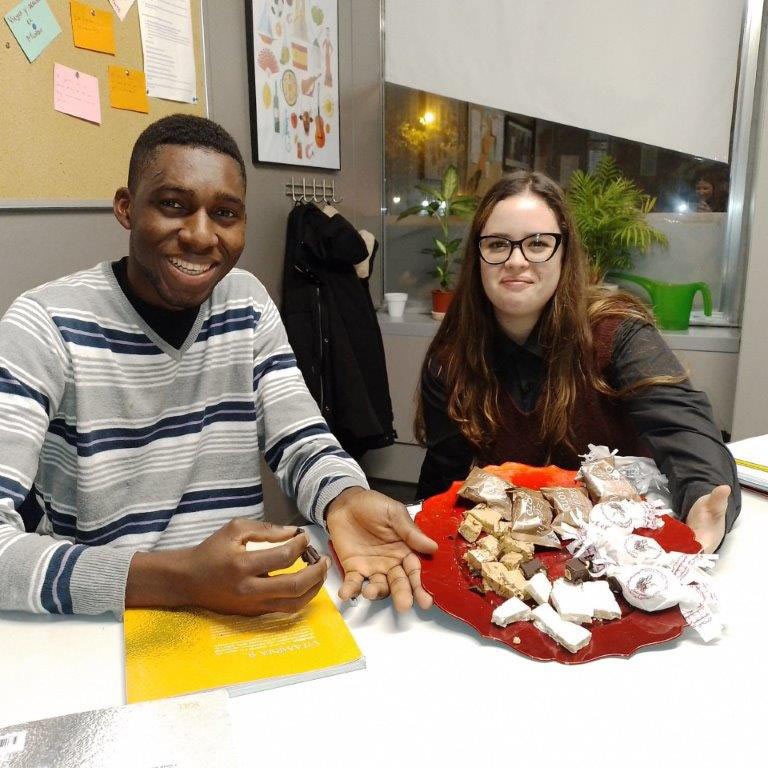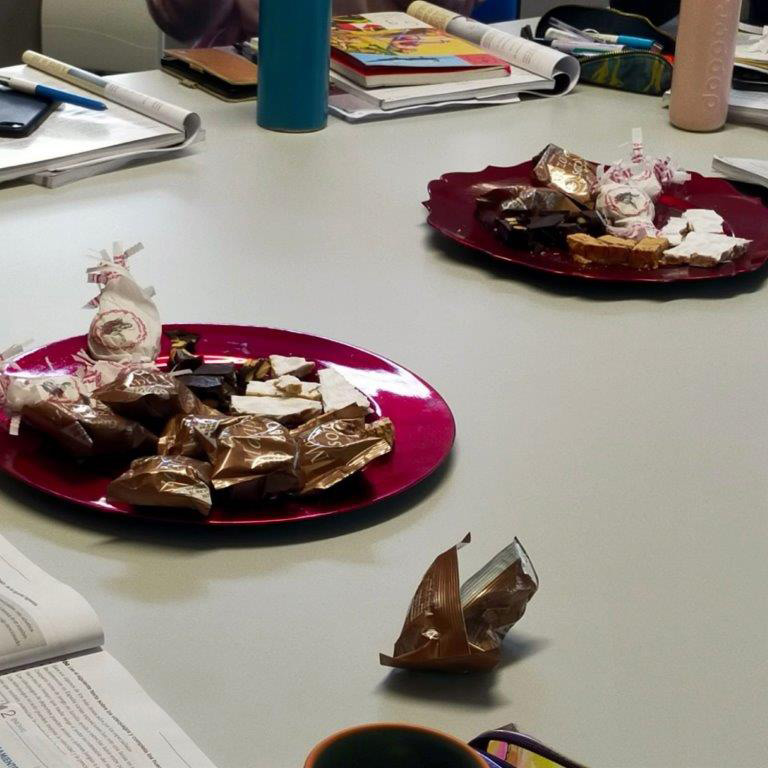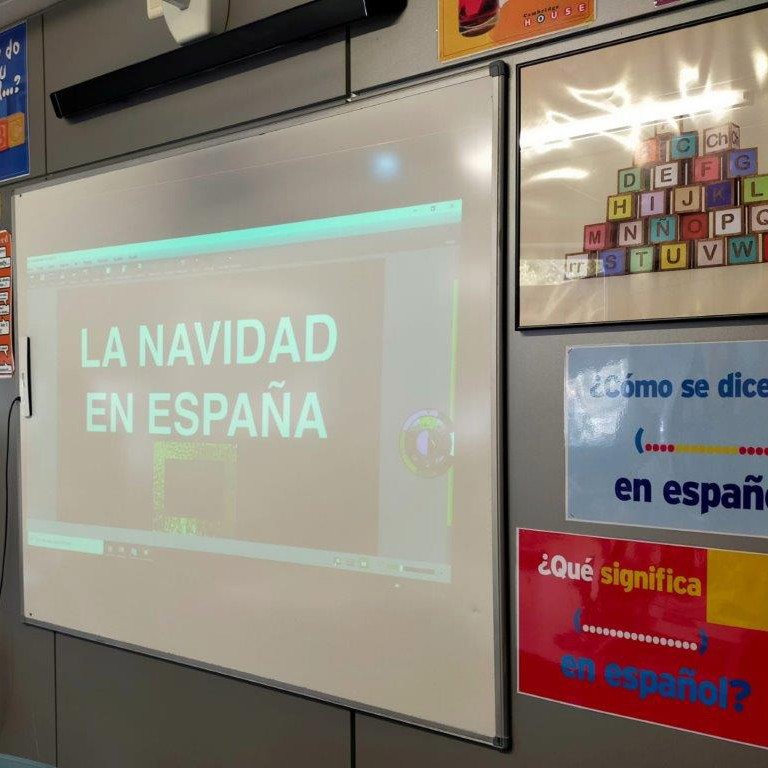It’s that time of year again – Christmas! So, here at Hablamos we thought it would be a good idea to tell you all about what it’s like to pasar la Navidad (spend Christmas) here in Spain
The Christmas period here runs from el 24 de diciembre (24th December) to el 6 de enero (6th January). That’s a whole two weeks so let’s look at which fechas (dates) are the most important and why.
.
¡Feliz Navidad!
First of all, you probably want to know how to say “Merry Christmas” in Spanish. We say Feliz Navidad and is more akin to Happy Christmas, really. This greeting is, like its counterparts in other languages, found everywhere at this time of year and you might see the variation Felices Fiestas (Happy Holidays) too. At the end of November or beginning of December, you need to get putting up your árbol de navidad (Christmas tree) complete with all its adornos (decorations), and your belén (Nativity scene) to be ready for the party to come!
Christmas Eve – The meal you’ve been waiting for!
In a traditional Spanish Christmas, the most important meal for everyone takes place on Nochebuena (Christmas Eve). Everyone goes to see their family and the main festivities normally start around 9pm when people decide to cenar (have dinner) to celebrate the start of the Christmas holidays. Traditional food on Nochebuena can vary between the different regions in Spain, but here in Madrid you might find consomé (broth) and lombarda (red cabbage) which would accompany things like cordero lechal (lamb) or mariscos (seafood) or pescado (fish). El postre (dessert) at this time of year would consist of turrón (nougat – but this can be a type of chocolate bar too), plovorones (a type of lard based biscuit) and mazapán (marzipan).
While eating this late feast, many people watch el discurso del Rey (the King’s speech) which is broadcast at 9pm, and then many go to la Misa del Gallo (midnight mass) at their local church to celebrate the birth of Jesus on el día de Navidad (Christmas Day).
Christmas Day – Recovery time
Unlike in many countries, el día de Navidad (Christmas Day) is not when people get their presents. There is, traditionally, no Papa Noel (Santa Claus) in a Spanish Christmas – probably because he’s so busy visiting all the other countries in the world he just can’t get to Spain. I can’t possibly think of any other reason! Some people do now get the big red man to pay a visit and leave a few things, but it’s not the most common thing for people to do. Anyway, on Christmas Day families tend to just relax and chill out, many times eating las sobras (the leftovers) from the huge meal the night before.
El día de los inocentes - April Fools’ Day in December
El 28 de diciembre (28th December) is the Día de los Santos Inocentes (Day of the Holy Innocents) is when Catholics mark the matanza de los niños (the massacre of the children) by King Herod as he was looking to get rid of the recently born baby Jesus. Such a sad event sounds very sombre, but to lighten the mood, this is the day when Spaniards gastan bromas (play tricks) on each other. This also commemorates the tricks that were played on Herod to ensure he didn’t return to try and kill more children!
El Día de los Reyes Magos – Presents on the 6th of January
By far the most anticipated day in a Spanish Christmas is actually the last one! El 6 de enero (6th January) is when children (and adults!) all over the country open their regalos (presents) which were left for them the night before by los Reyes Magos (the Three Wise Men/Kings). On the night of 5th January, los Reyes Magos (Melchor, Gaspar y Baltasar) visit everyone’s houses to leave the regalos (presents) but not until they’ve celebrated la cabalgata de los Reyes Magos (the Three Kings Parade) with colourful carrozas (floats) through city centres all over Spain. It’s also the day to enjoy el roscón de Reyes (Three Kings Cake) and try to find the hidden figurita (little figure – often one of the three wise men) and avoid the unlucky haba (bean). We’ll tell you more about this special day closer to the time!
And so, the 6th January marks the end of las fiestas de Navidad (Christmas holidays). By now, everyone is demasiado lleno (too full) with all that Christmas food and drink and so need to ir al gimnasio (go to the gym) to work it all off ready for next December! When you come to Spain to learn Spanish, we definitely recommend ensuring you’re here to see all the amazing things that happen at this time of year. And to help you talk about it all, here’s some useful vocab.
| Spanish | English |
| El árbol de navidad | Christmas tree |
| Las luces de navidad | Christmas lights |
| Un regalo | A present |
| Un adorno | A decoration |
| Un belén | Nativity scene |
| Nochebuena | Christmas Eve |
| El día de Navidad | Christmas Day |
| El día de los Santos Inocentes | Day of the Holy Innocents (aka April Fools Day) |
| Nochevieja | New Year’s Eve |
| Año Nuevo | New Year |
| El día de los Reyes Magos | Three Kings Day / Three Wise Men Day |
| Papá Noel | Santa Claus |
| Celebrar | To celebrate |
So all that’s left for us to do is say ¡Feliz navidad a todos! – we hope you all have a fantastic Christmas, wherever you are, and hope to see some of you here on one of our Spanish courses in Madrid or online in the near future!





